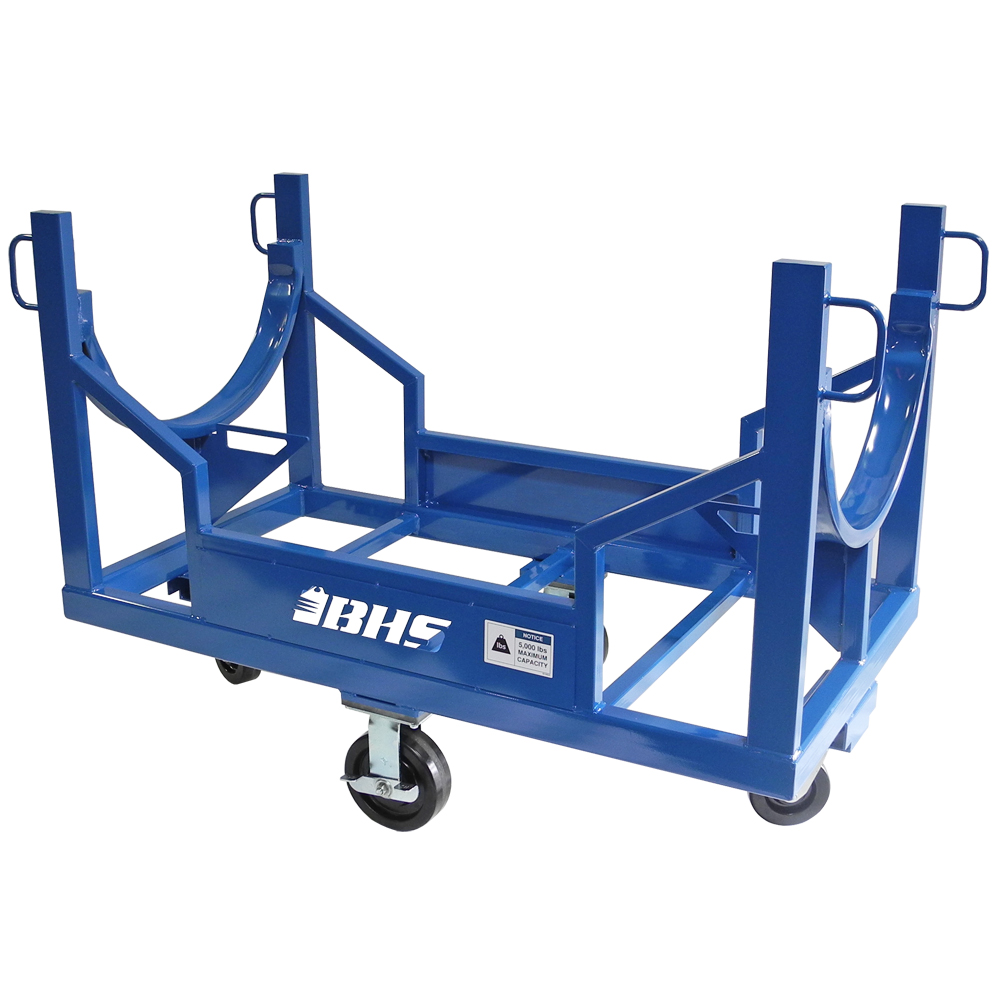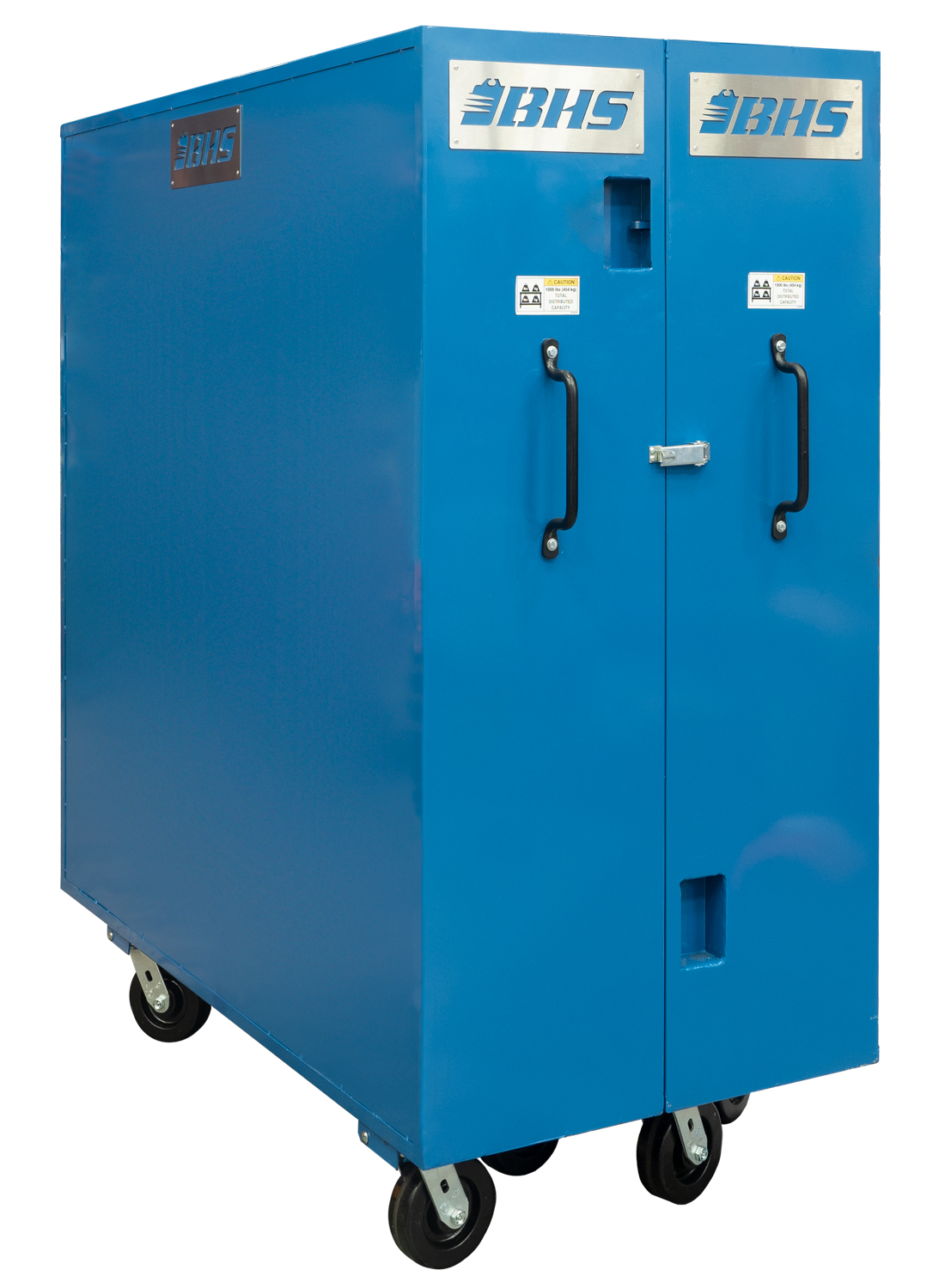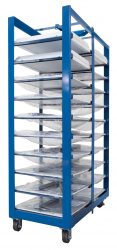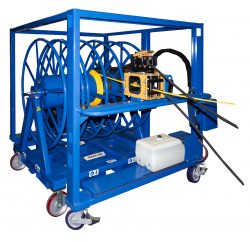We use cookies to make your experience better. To comply with the new e-Privacy directive, we need to ask for your consent to set the cookies. Learn more.
Lighting Installation on a Tight Timeline: Labor-Saving Strategies
Not every electrical contracting firm can deliver on a short-schedule lighting installation project. However, those who can leverage time-saving strategies, advanced equipment, and robust prefabrication facilities to meet tight deadlines are often the most successful companies in the industry.
It is not easy to improve productivity without sacrificing quality. With the rise of fast-track construction and aspirational project timelines in general, these two forces often vie with one another for dominance. The trick is to build an electrical contracting organization that can deliver both efficiency and top-quality work simultaneously.
This is increasingly true. As building schedules get shorter and shorter, there are plenty of reasons a builder might press for quicker work. Industrial facilities lost to fire or natural disasters must be replaced in a hurry, as owners tend to hemorrhage money with each passing day of work shut-down. School districts might need a new building to meet state guidelines on class sizes, prompting a rush to get the project completed. Any governmental agency could demand an accelerated timeline for construction, promising delivery on hard-to-meet goals to their constituents.
Regardless of the reason owners ask for an aggressive schedule, the ability to shave weeks off of lighting installation projects separates leading electrical contractors in the construction field from their competitors. But the problem remains: How can you ensure quality work while also cutting installation time down to the absolute minimum?
The following guidelines are far from complete, but they offer perspective on some approaches that have been successful for other electricians working on a tight timeline. These suggestions might apply to any aggressively paced lighting installation job:
-
Take full advantage of the prefabrication shop.

The rise of digital modeling systems, like 3D CAD and BIM, gives electricians unprecedented power to prepare conduit with pre-planned lengths and angles. Using these models, prefab staff can build the pieces electricians use on-site to complete the structure. They can strap down conduit onto pre-marked Conduit Carrier Carts and send them room-by-room, installing one piece at a time without pausing to bend or cut new pipe.This saves a lot of time at the installation site. It also cuts down on musculoskeletal strain for the job-side electrical team.
The more components that arrive at the site ready to go, the faster electricians can complete the entire installation job. Prefabrication shops are the key to success in fast-track construction projects.

But what if you don't have an existing prefabrication facility? You can still realize the benefits of an established prefab shop; you'll just have to set aside a corner of the work site. Bifold High Value Carts provide secure access to fabrication tools, and lock up at the end of the shift for dependable, safe storage. Try affixing essential equipment like conduit benders and pipe threaders to a standard High Value Cart to create a one-piece, mobile prefab station. -
Use a mobile office to access desktop BIM systems on-site.
Building Information Modeling (BIM) systems allow the various stakeholders in a construction project to collaborate in real time, preventing work-stopping conflicts in integration. By placing a BIM system within a broader mobile office at the job site itself, electrical contractors can track and report on processes without having to leave the area.
This capability alone can prevent delays owing to last-minute changes from owners, engineers, and architects. This is vital for any fast-track construction project, defined here as the process of beginning construction before all plans are finalized.
Likewise, the growing field of mobile BIM tools allows every worker in the installation to contribute real-time updates to project goals and achievements. This instant communication smooths out workflow across all stakeholders, from architects to apprentices.
Electrical contractors can monitor the progress of the job from just a few feet away. If any questions arise, they can immediately locate accurate, up-to-date information from an on-site BIM Cart, using it to solve problems that might previously have taken hours — or, even worse, led to costly, time-consuming installation mistakes.
-
Prepare fixtures for simple, grab-and-go installation.
Electricians on lighting projects spend a lot of time in the field simply unpacking and preparing fixtures. Not only does this lead to delays in installation, it adds considerably to clean-up time, as workers must collect the cardboard packaging that inevitably ends up strewn around the job site.

Of course, fixtures are also notoriously fragile and difficult to handle in bulk. In order to protect them during transit, contractors typically leave them in their protective packaging until the last possible moment. Until recently, equipment designed to store, transport, and protect unpackaged light fixtures has been difficult to find.No longer. Light Fixture Carts from BHS hold bulk quantities of commercial light fixtures. These units were designed to hold standard fluorescent fixtures in common sizes (2' by 2' or 2' by 4'). Light Fixture Carts perform just as well for LED fixtures that meet the same dimensions, but custom-built units are available to accommodate unconventionally sized components.
The prefab shop comes into play here, too. Before loading up the Light Fixture Cart, staff can prewire ballast for the specified voltage, thread in a length of conduit, and install mounting hardware. That way, electricians in the field just have to install the unit and move on to the next.
-
Prespool wires onto mixed reels.
Pre-planning allows electricians to order custom paralleled reels of conductor, achieving in a single pull what used to take multiple passes. Sometimes, though, vendors may not offer custom paralleling services. Last-minute changes to the electrical and data systems can also short-circuit even the best-prepared mixed reels.
Contractors can prepare for these contingencies by adding Spool Winding Trolleys and Parallel Reel Payouts to the prefab shop. With this set-up, workers can easily build their own custom-mixed reels. Alternately, they can spool multiple types of cable onto separate, fixed wheels that rotate together at the same rate. This allows electricians to pull the cables as one in the field.

Spool Winding Trolleys provide instant readouts of linear footage as they fill reels. This ensures perfect accuracy on the cable count, preventing both over-ordering and delays in the field.As an added bonus, Parallel Reel Payouts with optional casters and floor locks offer a highly mobile source of cable or electrical wire. The frame includes fork pockets, too. Load the reels with specified conductors, place the unit on a truck to transport it to the job site, and wheel it into place via casters. This creates highly efficient workflow from source reels to the installation site.
-
Organize, organize, organize.
Material handling equipment — even units designed specifically to serve electricians in the construction field — can only improve productivity so far. Ultimately, contractors have to organize their teams to ensure they're accomplishing work on time. After all, a delay in one section of the building can quickly cause a domino effect and slow work across the board.
That organization starts with adequate scheduling. Without enough electricians and other workers, it might not be possible to keep up with a tight schedule.
Once the team is assembled, the challenge is to keep everyone pulling in the same direction. Daily task sheets for each crew member provide clear goals. Project managers can make a "wish list" of what they'd like each electrician to accomplish that day. Then, they can adjust the following morning based on the actual work the team accomplishes.
Software services can help with this aspect of the job, as well. Numerous companies offer BIM-compatible solutions that help to control scheduling, task lists, progress checkpoints, and detailed reporting.
Combined with a robust BIM system, this software helps provide planners with up-to-the-minute snapshots of where the project stands. This allows them to make split-second decisions on what to prioritize during the upcoming shift.
Workplace Safety for Electricians on a Tight Schedule
Something important is missing from our above analysis, you might have noticed. You can't talk about improvements to electrical installation processes without also discussing safety. Safety must be woven into every workplace process, and it must win out over perceived efficiency benefits every time.
Luckily, some of the techniques that cut down on installation time also improve occupational safety. For instance, using more prefabricated components allow workers to spend less time on ladders or in personnel lifts. By paralleling conductors into a single pull, you reduce the ergonomic hazards associated with multiple cable pulls.
Safer, more efficient lighting installation requires serious commitment. Contractors must purchase new, labor-saving equipment. They must invest in prefabrication shops and additional training. They may also have to pay staff for extended shifts, 6-day weeks, and other instances of overtime.
The pay-off, though, is clear. Electricians who specialize in rapid-response lighting installation provide a service their customers can't find elsewhere, and that's the blueprint for success.
References:
Fischbach, Amy. "Fast-Track Project Demands Labor-Saving Methods." ECMWeb. Informa USA, 18 Sept. 2013. Web. 31 Aug. 2018.
Ireland, Beck. "Shortcuts on the Fast Track." ECMWeb. Informa USA, 1 May 2006. Web. 31 Aug. 2018.
Maghiar, Marcel, David Witt, and Dylan John. "Progressive mobile BIM tools usage for productivity improvements on construction sites." ASEE. American Society for Engineering Education, 2015. PDF. 31 Aug. 2018.
Shook, Stan. "Rushing Counts Can Hurt." ECMag. Electrical Contractor Magazine, Nov. 2008. Web. 31 Aug. 2018.

